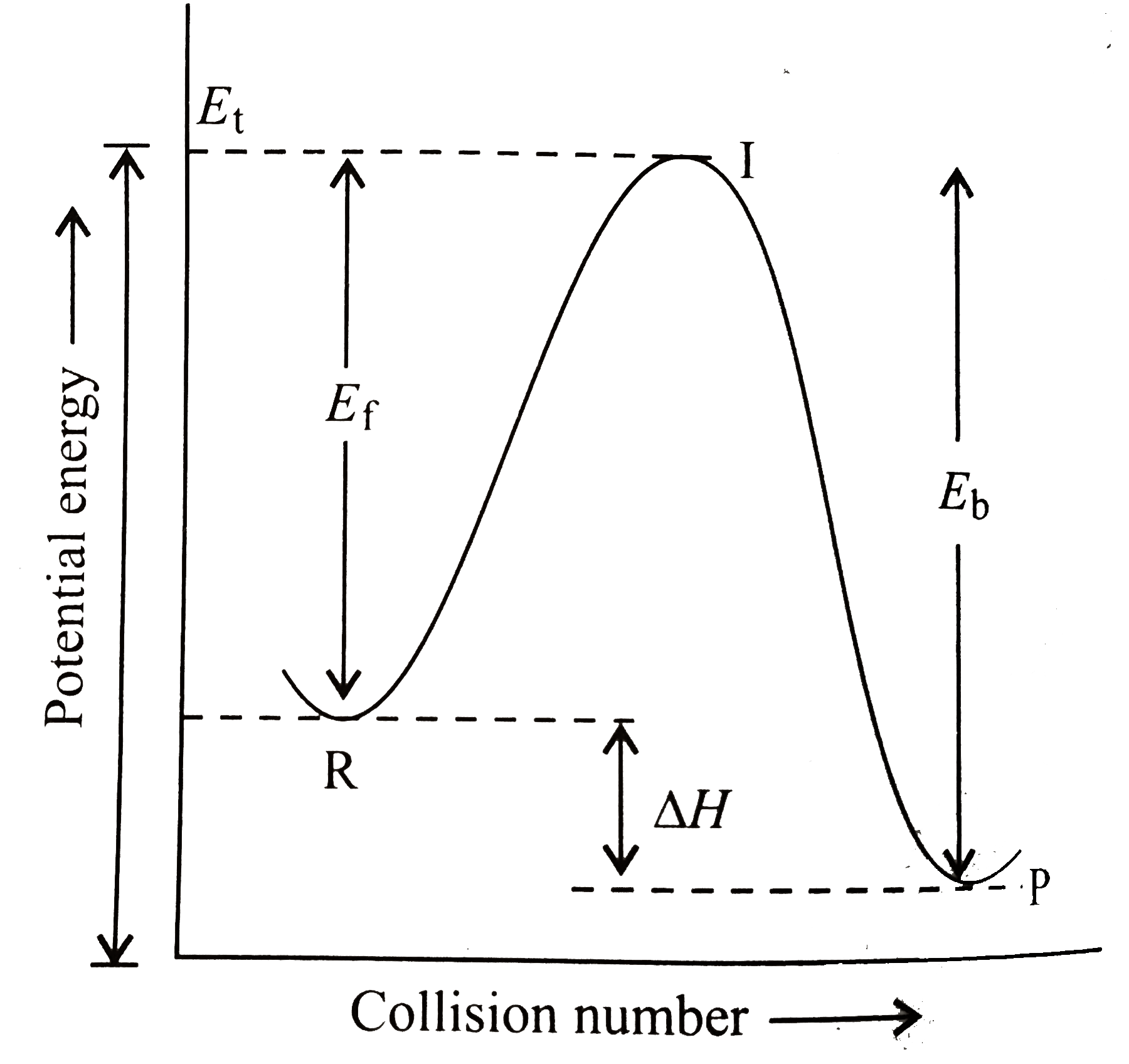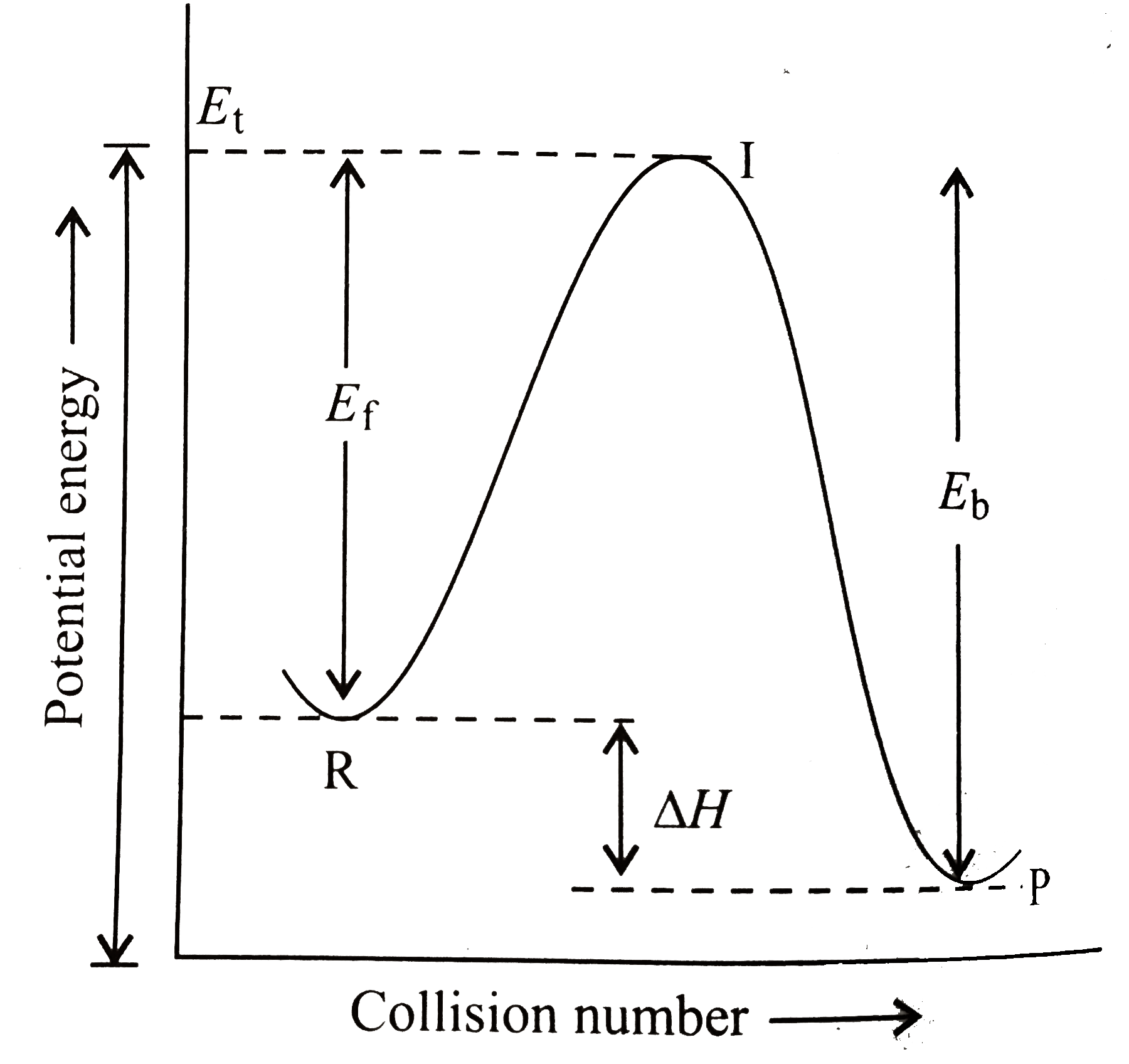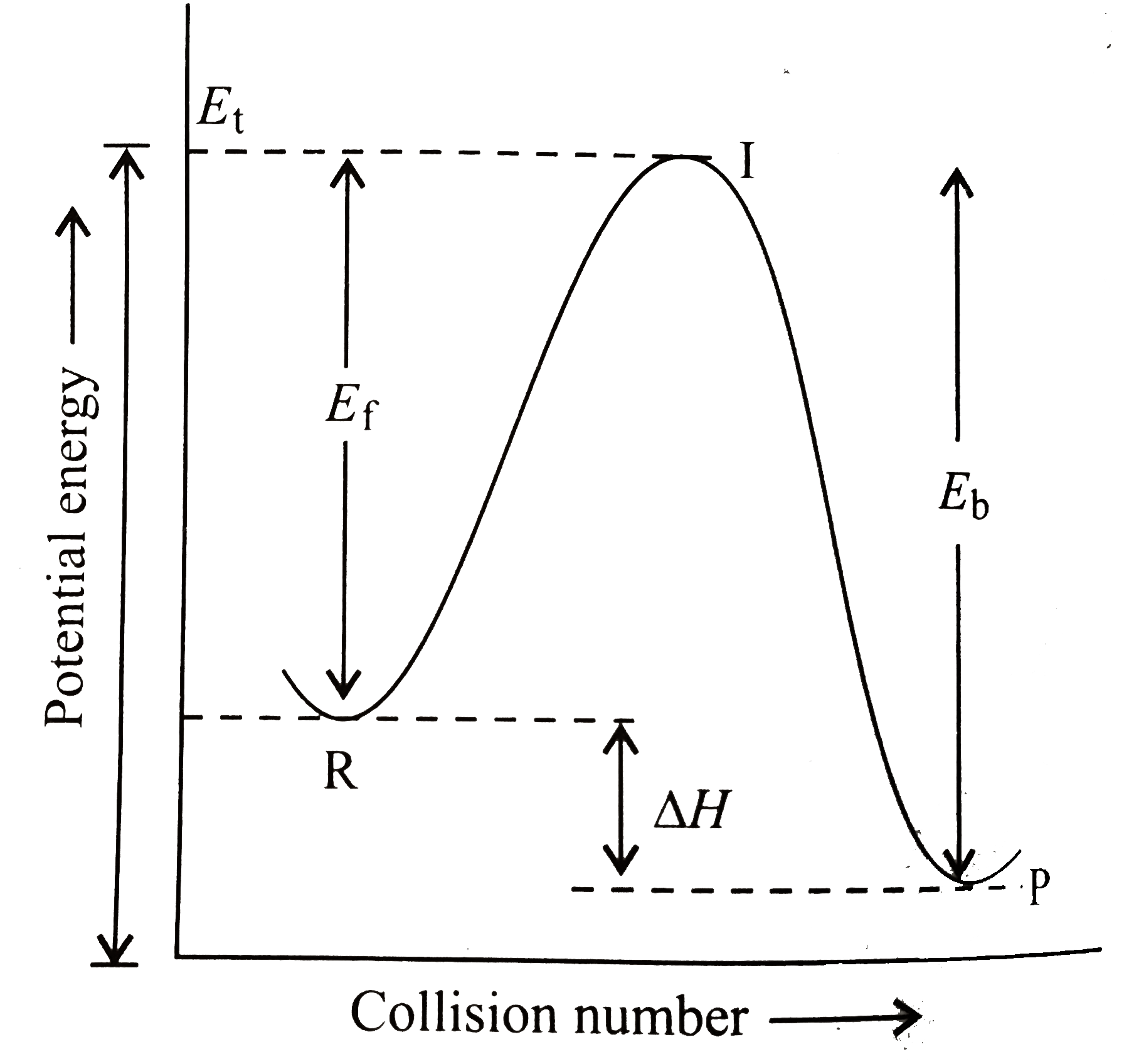The dissociation of (molecular) chlorine is an endothermic process, ΔH=243.6kJmol−1. The disoociation can also attained by the effect of light.
How large is the quantum yield (=the number of product molecules per absorbed photons)?
The correct Answer is:The quantum yield cancel(O)=("the number of HCl molecules formed")/("the number of absorbed photons")
cancel(O)=(((n(HCl)xxN_(A)))/(e_("tot")))/((hc)/lambda_(2))=(((6.5xx10^(-2)xx6.02xx10^(23)))/(0.2xx2.5))/((6.6xx10^(-34)xx3xx10^(8))/(2.536xx10^(-7)))=6.1xx10^(4)
The energy input =10×0.02=0.2W
To find the quantum yield for the dissociation of molecular chlorine, we can follow these steps:
Step 1: Understand the Concept of Quantum Yield
Quantum yield (Φ) is defined as the number of product molecules formed per absorbed photon. In this case, we are interested in the dissociation of chlorine molecules into two chlorine atoms.
Step 2: Identify the Energy Required for Dissociation
We are given that the dissociation of molecular chlorine is an endothermic process with a change in enthalpy (ΔH) of 243.6 kJ/mol. This means that to dissociate one mole of chlorine (Cl₂) into two moles of chlorine atoms (2 Cl), we need 243.6 kJ of energy.
Step 3: Convert Energy to Joules
Since quantum yield calculations typically use joules, we need to convert the energy from kJ to J:
243.6 kJ/mol=243600 J/mol
Step 4: Calculate the Energy Required for One Molecule
To find the energy required to dissociate one molecule of Cl₂, we can use Avogadro's number (Na = 6.022×1023 molecules/mol):
Energy per molecule=243600 J6.022×1023 molecules≈4.05×10−19 J/molecule
Step 5: Relate Energy to Photons
The energy of a photon can be calculated using the equation:
E=hcλ
where:
- E is the energy of the photon,
- h is Planck's constant (6.626×10−34 J s),
- c is the speed of light (3.00×108 m/s),
- λ is the wavelength of light used.
Step 6: Calculate the Energy of a Photon
Assuming we use visible light with a wavelength of about 500 nm (which is 500×10−9 m):
E=(6.626×10−34 J s)(3.00×108 m/s)500×10−9 m≈3.98×10−19 J/photon
Step 7: Calculate the Quantum Yield
Now, we can calculate the quantum yield using the formula:
Φ=Energy required to dissociate one moleculeEnergy of one photon=4.05×10−19 J/molecule3.98×10−19 J/photon≈1.02
Conclusion
The quantum yield for the dissociation of molecular chlorine is approximately 1.02, meaning that for every photon absorbed, about one molecule of Cl₂ is dissociated.
Quantum yield (Φ) is defined as the number of product molecules formed per absorbed photon. In this case, we are interested in the dissociation of chlorine molecules into two chlorine atoms.
We are given that the dissociation of molecular chlorine is an endothermic process with a change in enthalpy (ΔH) of 243.6 kJ/mol. This means that to dissociate one mole of chlorine (Cl₂) into two moles of chlorine atoms (2 Cl), we need 243.6 kJ of energy.
Since quantum yield calculations typically use joules, we need to convert the energy from kJ to J:
243.6 kJ/mol=243600 J/mol
To find the energy required to dissociate one molecule of Cl₂, we can use Avogadro's number (Na = 6.022×1023 molecules/mol):
Energy per molecule=243600 J6.022×1023 molecules≈4.05×10−19 J/molecule
The energy of a photon can be calculated using the equation:
E=hcλ
where:
- E is the energy of the photon,
- h is Planck's constant (6.626×10−34 J s),
- c is the speed of light (3.00×108 m/s),
- λ is the wavelength of light used.
Assuming we use visible light with a wavelength of about 500 nm (which is 500×10−9 m):
E=(6.626×10−34 J s)(3.00×108 m/s)500×10−9 m≈3.98×10−19 J/photon
Now, we can calculate the quantum yield using the formula:
Φ=Energy required to dissociate one moleculeEnergy of one photon=4.05×10−19 J/molecule3.98×10−19 J/photon≈1.02
The quantum yield for the dissociation of molecular chlorine is approximately 1.02, meaning that for every photon absorbed, about one molecule of Cl₂ is dissociated.
Similar Questions
The dissociation of (molecular) chlorine is an endothermic process, ΔH=243.6kJmol−1. The disoociation can also attained by the effect of light.
What is the energy of the photon with the critical wavelength?
View SolutionThe dissociation of (molecular) chlorine is an endothermic process, ΔH=243.6kJmol−1. The disoociation can also attained by the effect of light.
At what wavelength can the dissociating effect of light be expected?
View SolutionThe dissociation of (molecular) chlorine is an endothermic process, ΔH=243.6kJmol−1. The disoociation can also attained by the effect of light.
How can the value obtained be (qualitatovely) explained? Describe the reaction mechanism.
View SolutionThe dissociation of (molecular) chlorine is an endothermic process, ΔH=243.6kJmol−1. The disoociation can also attained by the effect of light.
Can this effect also be obtained with light whose wavelength is smailer or larger than the calculayed critical wavelength?
View Solution(a) The decomposition of A into products has a value of K as 4.5×103s−1 at 10∘C and energy of activation 60kJ mol−1. At what temperature would K be 1.5×104s−1 ?
(b) (i) If half life period of a first order reaction is x and 3/4th life period of the same reaction is y, how are x and y related to each other ?
(ii) In some cases it is found that a large number of colliding molecules have energy more than threshold energy, yet the reaction is slow. Why?
View SolutionPhotosysthesis si a bio process by which plants make energy rich molecules from low energy molecules with the help of energy from sunlight . The photosysthesis of glucose can be represented as:
6CO2(g)+6H2Og+hv→C5H12O6(s)+6O2(g)..........(i)
The energy of one mole of a photon of wave lenght is known as one Einstein.
48 Einsteins of 650nm are absorbed by a plant for the production of 1 mole of glucose as given in equation (i). Calculate the % efficiency for the production of glucose by photosynthsis. The energy requried for the formation of 1 mole of glucose is 2870 KJ.
View SolutionA colliison between reactant molecules must occur with a certain minimum energy before it is effective in yielding Product molecules. This minimum energy is called activation energy Ea Large the value of activation energy, smaller the value of rate constant k. Larger is the value of activation energy, greater is the effect of temperature rise on rate constant k.

Ef= Activation energy of forward reaction
Eb= Activation energy of backward reaction
ΔH=Ef−Eb
Ef= threshold energy
If a reaction A+B→C is exothermic to the extent 30kJmol−1 and the forward reaction has an activation energy of 249kJmol−1 the activation energy for reverse reaction in kJmol−1 is
View SolutionA colliison between reactant molecules must occur with a certain minimum energy before it is effective in yielding Product molecules. This minimum energy is called activation energy Ea Large the value of activation energy, smaller the value of rate constant k. Larger is the value of activation energy, greater is the effect of temperature rise on rate constant k.

Ef= Activation energy of forward reaction
Eb= Activation energy of backward reaction
ΔH=Ef−Eb
Ef= threshold energy
The activation eneries for forward and backward reactions in a chemical reaction are 30.5 and 45.4kJmol−1 respectively. The reaction is
View SolutionA colliison between reactant molecules must occur with a certain minimum energy before it is effective in yielding Product molecules. This minimum energy is called activation energy Ea Large the value of activation energy, smaller the value of rate constant k. Larger is the value of activation energy, greater is the effect of temperature rise on rate constant k.

Ef= Activation energy of forward reaction
Eb= Activation energy of backward reaction
ΔH=Ef−Eb
Ef= threshold energy
In a hypothetical reaction A→B, the activation energies for the forward and backward reactions are 15 and 9kJmol−1, respectively. The potential energy of A is 10kJmol−1. Which of the following is wrong?
View SolutionLe Chatelier's Principle
If a system at equilibrium is subjected to a change of any one of the factors such as concentration, pressure or temperature, the system adjusts itself in such a way as to nullify the effect of that change.
Change of pressure : If a system consists of gases, then the concentration of all the components can be alterd by changing the pressure. To increase the pressure on the system,the volume has to be decreased proportionally. The total number of mols per unit volume will now be more and the equilibrium will shift in the direction in which there is a decrease in number of moles i,e. towards the direction in which there can be decrease in pressure.
Effect of pressure on melting point : There are two types of solids:
(a) Solids whose volume decreases on melting e.g., ice,diamond carborundum magnesium nitride and quratz.
Solids (higher volume)⇔Liquid (lower volume) The process of melting is facilitated at high pressure, thus, melting point is lowerd.
(b) Solids whose volume increase on melting e.g.,Fe,Cu,Ag,Au,etc.
Solid (lower volume)⇔ Liquid (higher volume) In this case the process of melting become difficult at high pressure, thus melting point becomes high.
(c) Solubility of substances : When solid substances are dissolved in water, either heat is evolved (exothermic) or heat is absorbed (endothermic).
KCI+aq⇔KCI(aq)−heat
In such cases, solubility increase with increase in temperature. Consider the case of KOH, when this is dissolved,heat is evolved.
KOH+aq⇔KOH(aq)+heat
In such cases, solubility decrease with increase in temperature.
(d) Solubility of gases in liquids : When a gas dissolves in liquid,there is decrease in volume. Thus increase of pressure will favour the dissolution of gas in liquid.
A gas 'X' when dissolved in water,heat is evolved. Then solubility of 'X' will increase:
View Solution
